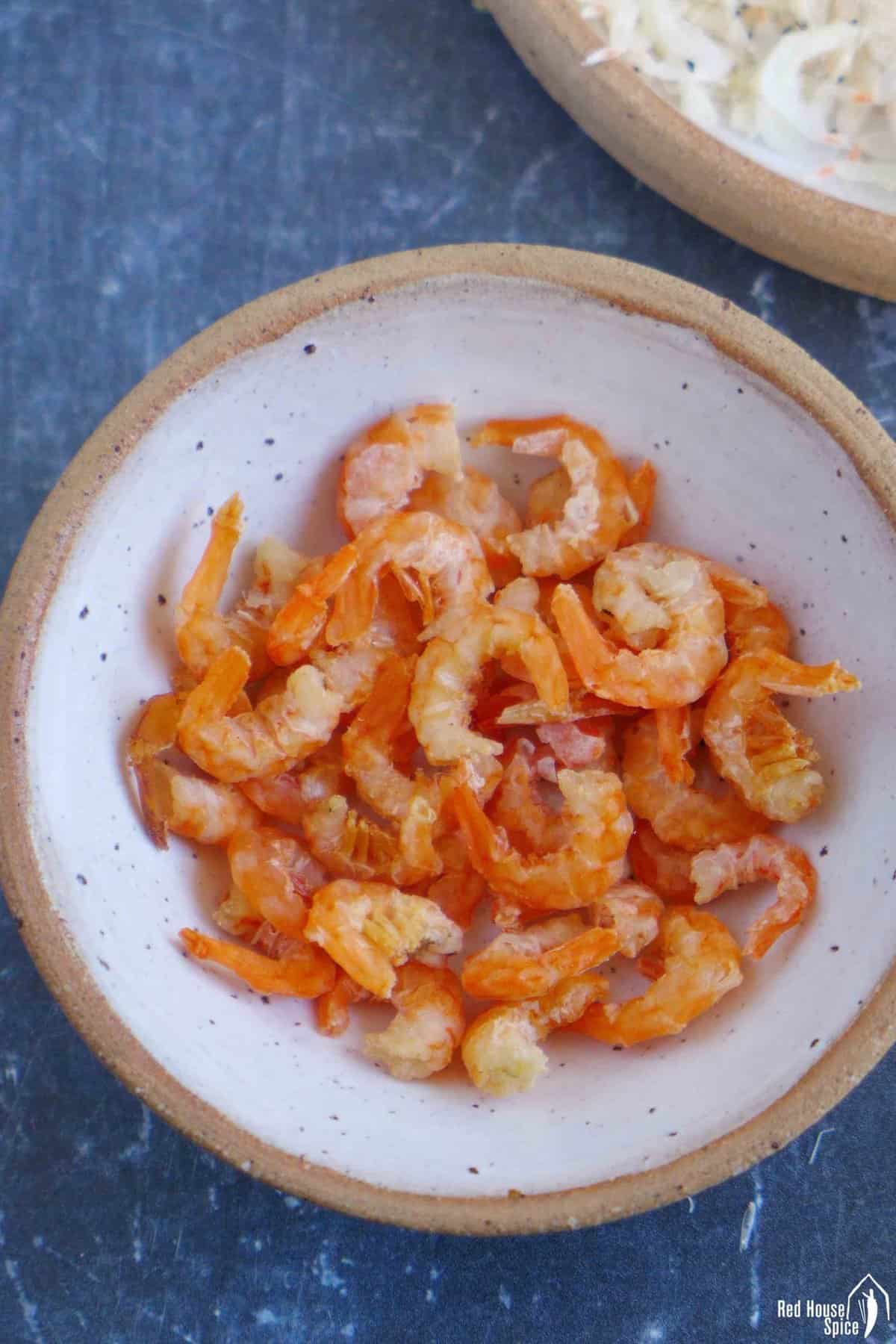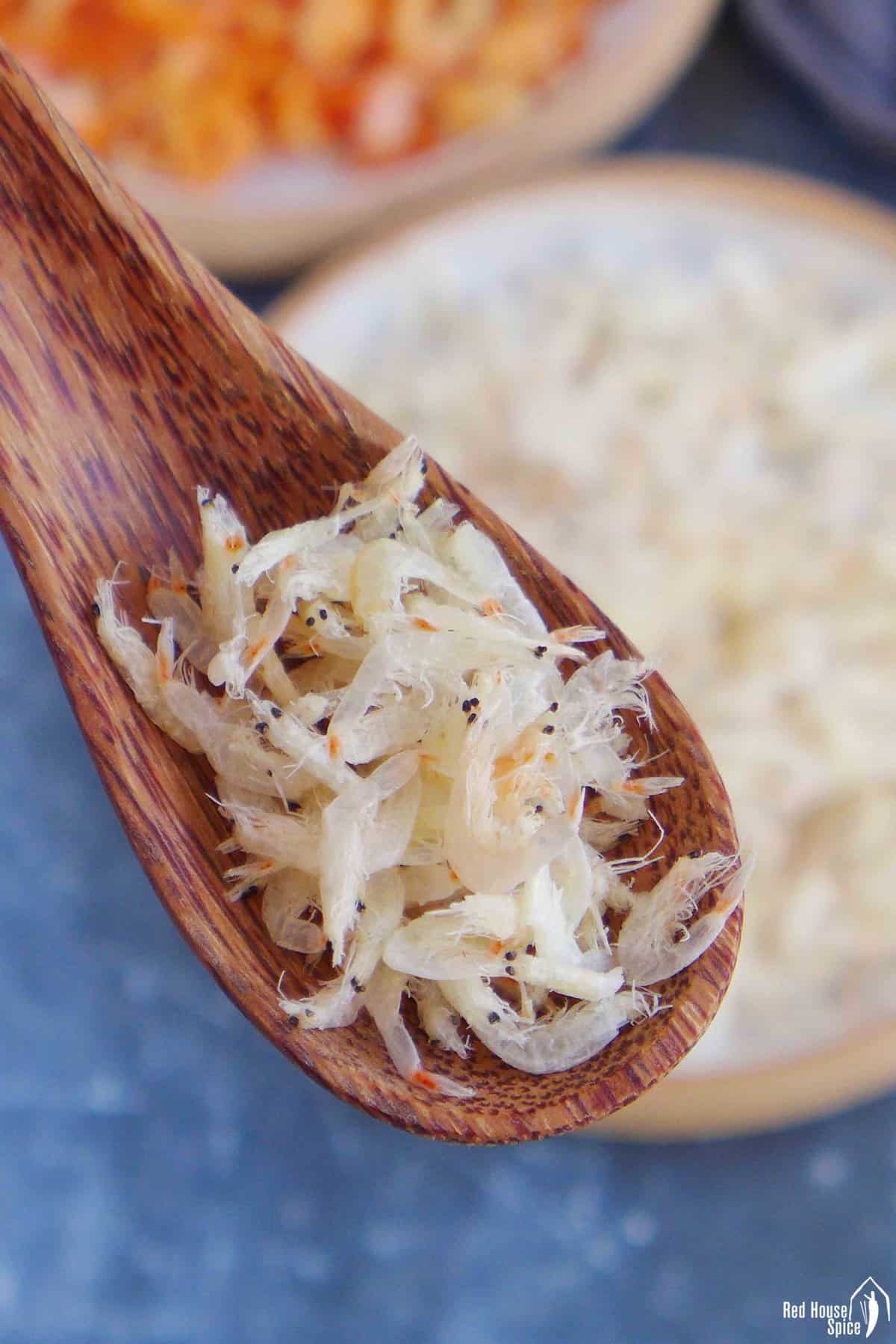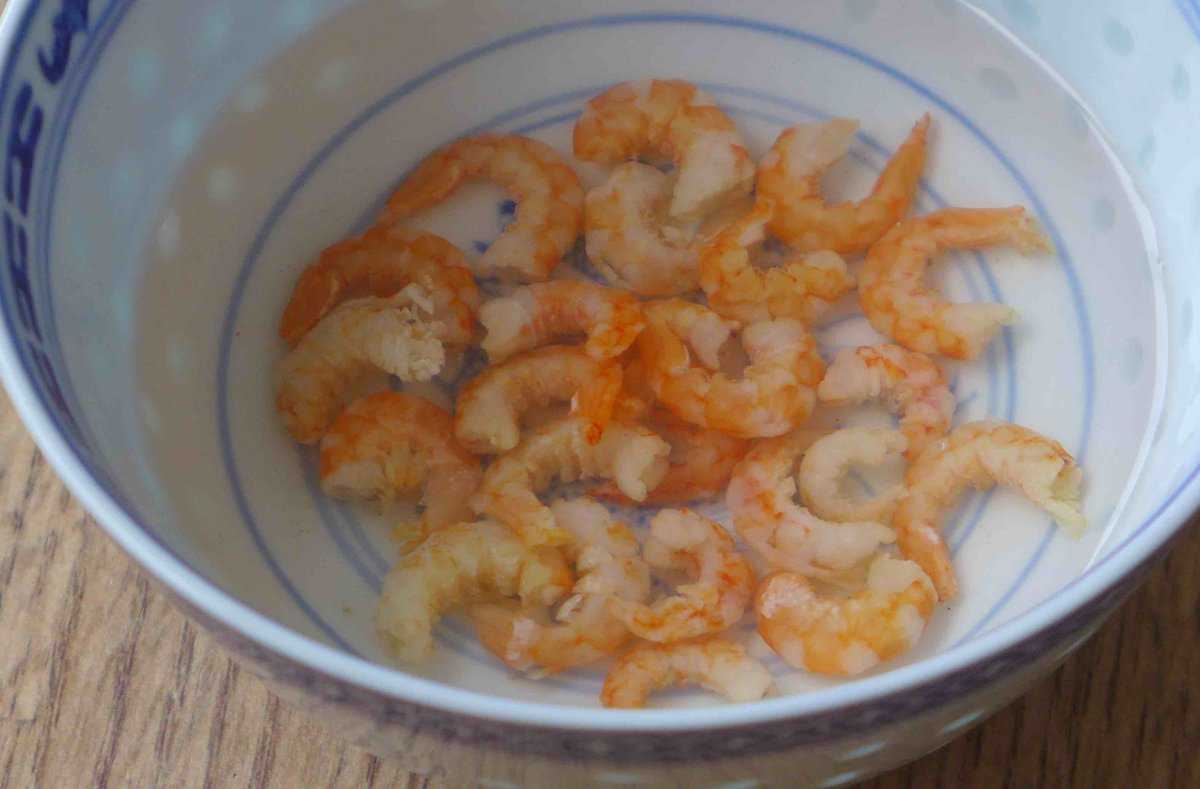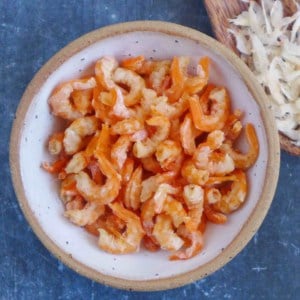A secret ingredient to rich umami taste, dried shrimp contributes to many delicious dishes. Here’s a how-to guide covering everything you need to know about it.
Dried shrimp are a versatile ingredient used in many cuisines around the world They provide a concentrated umami flavor and are shelf-stable, making them an excellent pantry staple While you can easily buy dried shrimp at many Asian grocery stores, making them at home allows you to control the ingredients and tailor them to your taste. This article will provide a step-by-step guide on how to make dried shrimp from fresh shrimp yourself.
Why Make Your Own Dried Shrimp?
Here are some of the benefits of making dried shrimp at home:
-
Control ingredients You can control the quality and freshness of the shrimp used, as well as the amount of salt and any other seasonings.
-
Customize to taste: Tailor the drying process to your preferences – lighter or darker, smokier flavor, level of saltiness, etc.
-
Quality and food safety: You’ll know exactly how the shrimp were handled and processed.
-
Cost savings: Drying shrimp yourself can be much less expensive than buying dried shrimp.
-
Versatility: Make batches of different sizes or with different flavor profiles.
Step 1: Select and Prepare the Shrimp
Almost any type of fresh shrimp can be used to make dried shrimp, but smaller shrimp around 40-60 count per pound are ideal. The shells help preserve moisture and flavor during drying. Ensure shrimp are very fresh, with no off odors. Peel and devein if desired.
I recommend buying shrimp head-on. The heads impart additional flavor as they dry. However, you can also remove the heads before brining if you prefer tail-on only.
Rinse the shrimp under cold running water and then drain thoroughly. Pat dry with paper towels.
Step 2: Brine the Shrimp
Before drying, the shrimp must be brined or salted to both preserve them and infuse flavor. Here are two simple brine recipes:
Basic Shrimp Brine
- 1 quart water
- 1/4 cup kosher salt
- Combine until salt dissolves. Submerge shrimp for 4-12 hours.
Aromatic Shrimp Brine
- 4 cups water
- 1/4 cup kosher salt
- 3 cloves garlic, smashed
- 1 bay leaf
- 1 teaspoon black peppercorns
- 1 inch knob ginger, sliced
- 2 scallions, chopped
- Bring brine ingredients to a boil. Cool completely then submerge shrimp for 4-12 hours.
After brining, drain shrimp and pat dry thoroughly with paper towels.
Step 3: Air Dry the Shrimp
Traditionally, dried shrimp are sun-dried outside in hot, arid climates. If you live in such an environment, spread brined shrimp on mesh trays in direct sunlight for 6-12 hours, bringing inside at night.
For most home cooks, use a dehydrator or low temperature oven to dry shrimp. Some options:
-
Dehydrator: Set temperature between 110-135°F and dry for 6-24 hours. Rotate trays occasionally.
-
Oven: Arrange shrimp on wire racks set on rimmed baking sheets. Set oven to lowest temperature, usually 170-200°F. Prop door open slightly. Dry for 6-24 hours.
Shrimp are fully dried when hard and brittle, but not burnt. The drying time will vary based on size of shrimp and conditions. Dried shrimp will keep for several months stored in an airtight container out of direct light.
Step 4: Optional – Smoke the Shrimp
For an extra layer of flavor, you can smoke the brined shrimp before or after drying.
To smoke before drying, arrange brined shrimp on smoking racks and smoke for 1-2 hours at 180°F using your favorite hardwood like oak or alder. Then proceed to dry the smoked shrimp as normal.
To smoke after drying, arrange dried shrimp on smoking racks and cold smoke for 1-2 hours. This will impart flavor without further drying the shrimp.
How to Use Dried Shrimp
Dried shrimp are used in small amounts to provide big umami impact in a wide variety of dishes. Here are some classic ways to use them:
-
Rehydrate in water for 30 minutes then add to soups, curries, and stews.
-
Grind to a powder using a mortar and pestle or spice grinder. Sprinkle on finished dishes.
-
Chop finely and add to salad dressings, dipping sauces, marinades, etc.
-
Saute quickly in oil then add to fried rice and noodles dishes.
-
Skewer on sticks for shrimp chips/crackers.
-
Add to Chinese dumpling or wonton filling.
-
Garnish congee, jook, or rice porridge.
-
Season roasted nuts and snack mixes.
So don’t be intimidated by dried shrimp! They are simple to make at home and add instant umami flavor to both Asian and non-Asian dishes. With a batch of homemade dried shrimp in your pantry, you’ll always be ready to add seafood savoriness to everyday meals.
Frequency of Entities:
dried shrimp: 42
shrimp: 28
brine: 7
smoke: 6
umami: 4
dehydrator: 3
oven: 3
salt: 3
drying: 3
brined: 3
dried: 3
season: 2
pantry: 2
soup: 2
arid: 1
curry: 1
stew: 1
grind: 1
powder: 1
sprinkle: 1
chop: 1
dressing: 1
sauce: 1
marinade: 1
saute: 1
oil: 1
fried rice: 1
noodle: 1
dumpling: 1
wonton: 1
filling: 1
congee: 1
jook: 1
porridge: 1
garnish: 1
roast: 1
mix: 1
savory: 1
seafood: 1
flavor: 1
everyday: 1
meals: 1

What is dried shrimp
Essentially, dried shrimp are sun-dried or baked (after being boiled) shrimp that has been completely or partially dehydrated. There is no dish that is made without them, but they are an important part of many classics that change how they taste.
To me, it is like an “unsung hero” in dishes. Even though its small size (often finely chopped) makes it easy to miss, the flavor it adds is rarely forgotten.
Like popular Asian ingredients like fish sauce or shrimp paste, dried shrimp gives food a unique umami (Xiān Wèi/鲻味) taste, which means savoriness and is one of the five basic tastes. It goes well with any ingredient, but I think it really shines in dishes that are mostly made with plant-based ingredients, like g. Tofu and Vegetable Soup, Turnip Cake, and more.
There are two types of dried shrimp used in Chinese cuisine: regular ones and papery ones.
Regular dried shrimp

The most common one is known as Xiā Mǐ/虾米, Hǎi Mǐ/海米, or Gān Xiā Rén/干虾仁. They’re orange-looking, firm to the touch, and have their heads and most of the skin removed.
They come in different sizes, ranging from ⅓ to 1 inch (1-2½ cm). The bigger ones are usually more pricey, but I find smaller ones are equally good in flavor.
Papery dried shrimp

This type is known as Xiā Pí/虾皮, which means “shrimp skin” literally. They are tiny, beige-colored shrimp that have heads and tails intact. They don’t look as dry or firm as the regular version and have a crispy texture.
The taste of papery dried shrimp is milder than regular dried shrimp. It has a sweet undertone that I really like. They can be used directly without soaking.
You can cook dried shrimp in a lot of different ways, like in soups, broths, dumpling fillings, stir-fries, fried rice, fried noodles, braised or steamed dishes, and more.
Their flavor goes a long way, but they are only needed in small amounts most of the time. Here are a few general rules to follow when using them:
- If you are using regular ones, you will need to rehydrate them first (read more in the next section).
- Papery ones can be used directly without soaking.
- They can be chopped up, ground, or added whole to dishes to give them more texture.
- They can taste better if you fry them in a little oil.
The following recipes on the blog are great examples of using this flavorful ingredient:
Regular dried shrimp needs to be rehydrated before cooking. This process helps to release their aroma. Also, you’ll find it much easier to chop the softened ones into small pieces.

- Put as many dried shrimp as the recipe says to a small bowl. Then, add enough hot water to cover the shrimp completely. Soak them for about 10 minutes, or until they get soft and plump.
- If the shrimp are very small, you can use them whole, but if they’re bigger, you can cut them up.
Tip: Do not discard the water in which the dried shrimp has been soaked. It’s full of flavor and thus can be added to the dish you’re cooking. This is similar to how you’d use the soaking water for shiitake mushrooms.
Dried shrimp can be found in Chinese/Asian grocery stores. It’s usually in plastic packaging and kept in either the chilled or frozen food sections. Some online shopping platforms, such as Amazon, also have it in stock.
Good quality ones have uniform size and color. The regular kind should be bright orange, and the papery kind should have its whole body (head and tail not broken).

Once you open the package, put the dried shrimp in a container that won’t let air in. Keep it in the fridge to keep it fresh. Use it up in two months.
If you have bought a large amount, divide them into small portions and freeze in separate airtight bags. Consume before its expiry date.
If you find it hard to source dried shrimp, here are a few substitute options:
- Dried scallops (Gān Bèi/干贝)
- Shrimp paste (Xiā Jiàng/虾酱)
- Fish sauce (Yú Lù/鱼露)
No matter which one you use, make sure you limit its quantity. All of them have a rather concentrated flavor and are high in sodium.

How to make Dried Shrimp Fast with a Dehydrator Recipe
How to cook dried shrimp to perfection?
Here are some tips on how to cook dried shrimp to perfection. When using dried shrimp in your recipes, it’s important to rehydrate them properly before cooking. Start by rinsing the dried shrimp in cold water to remove any excess salt or debris. Then, soak the shrimp in warm water for about 15-20 minutes, or until they become plump and tender.
How do you rehydrate dried shrimp?
In a small bowl, add the amount of dried shrimp that a recipe calls for, then pour in hot water enough to fully submerge the shrimp. Leave to soak for 10 minutes or so until they become plump and softer. You can either use the rehydrated shrimp in whole, if they’re quite small in size or cut them into finer pieces.
How do you soften dried shrimp?
Also, you’ll find it much easier to chop the softened ones into small pieces. In a small bowl, add the amount of dried shrimp that a recipe calls for, then pour in hot water enough to fully submerge the shrimp. Leave to soak for 10 minutes or so until they become plump and softer.
How long do you soak dried shrimp?
For soups and braised dishes, you can soak the dried shrimp for a shorter duration (30 mins to 1 hour) because they will loosen up during cooking. If you’re using the dried shrimp in dumpling filling or meatballs, you’ll need to soak them longer (3 hours to overnight).
